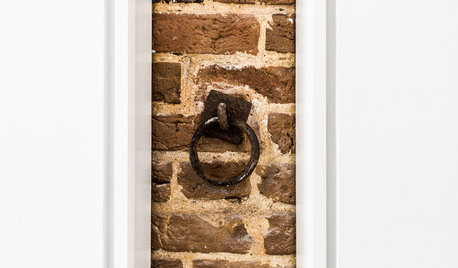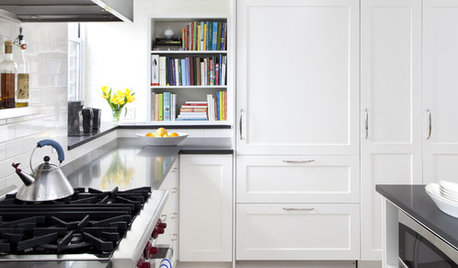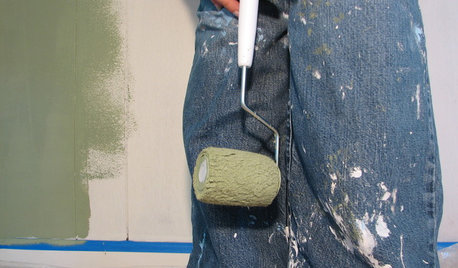should I remove the asbestos?
remodelingdc
12 years ago
Related Stories

LIFEYou Said It: ‘Rather Than Remove Them, They Framed Them’
Design advice, inspiration and observations that struck a chord this week
Full Story
HOUSEKEEPINGHow to Remove Water Rings From Wood Tables
You may be surprised by some of these ideas for removing cloudy white water marks from wood surfaces
Full Story
HOUSEKEEPINGThe Simple Way to Remove Wax From Candlesticks
Before you make a mess of things, read these easy steps for removing melted wax from your candlesticks
Full Story
FUN HOUZZEverything I Need to Know About Decorating I Learned from Downton Abbey
Mind your manors with these 10 decorating tips from the PBS series, returning on January 5
Full Story
SMALL KITCHENSThe 100-Square-Foot Kitchen: No More Dead Ends
Removing an angled peninsula and creating a slim island provide better traffic flow and a more airy layout
Full Story
DESIGN DICTIONARYIntegrated Kitchen
Appliances and millwork come together in this sleek approach to kitchen design
Full Story0

KITCHEN DESIGNSingle-Wall Galley Kitchens Catch the 'I'
I-shape kitchen layouts take a streamlined, flexible approach and can be easy on the wallet too
Full Story
LIFEThe Polite House: How Can I Kindly Get Party Guests to Use Coasters?
Here’s how to handle the age-old entertaining conundrum to protect your furniture — and friendships
Full Story
PAINTINGHelp! I Spilled Paint on My Clothes — Now What?
If you’ve spattered paint on your favorite jeans, here’s what to do next
Full Story
FEEL-GOOD HOME12 Very Useful Things I've Learned From Designers
These simple ideas can make life at home more efficient and enjoyable
Full StorySponsored
Franklin County's Full Service, Turn-Key Construction & Design Company
More Discussions










User
Billl
Related Professionals
Euclid Kitchen & Bathroom Designers · Freehold Kitchen & Bathroom Designers · Sun City Kitchen & Bathroom Designers · 20781 Kitchen & Bathroom Remodelers · Chicago Ridge Kitchen & Bathroom Remodelers · Garden Grove Kitchen & Bathroom Remodelers · Omaha Kitchen & Bathroom Remodelers · Saint Augustine Kitchen & Bathroom Remodelers · Wilson Kitchen & Bathroom Remodelers · Fernway Interior Designers & Decorators · Hercules Interior Designers & Decorators · Dardenne Prairie General Contractors · Groveton General Contractors · New Milford General Contractors · West Whittier-Los Nietos General Contractorsbrickeyee
sombreuil_mongrel
kudzu9
Billl
brickeyee
Billl
brickeyee
Billl
brickeyee
Billl
Christopher Nelson Wallcovering and Painting
HIWTHI